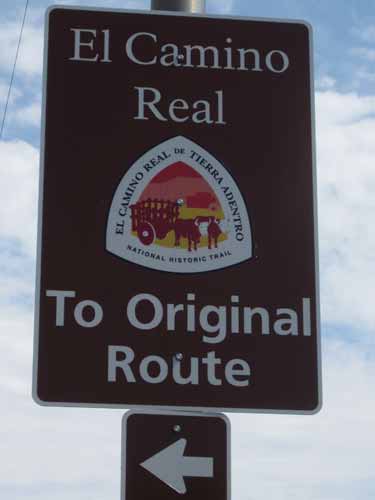
The El Camino Real de Tierra Adentro (Spanish for "The Royal Road of the Interior Land") was a 1,600 mile (2560 kilometer) long trade route between Mexico City and San Juan Pueblo (just a bit north of here, not too far from Taos) from 1598 to 1882, although it was used as an unofficial trail of the native tribes for countless years before that as well. The trip from the Rio Grande to the pueblo was said to take, by wagon and by foot, about 6 months including 2-3 weeks of rest throughout the trip. The trail also helped the Spanish conquistadors spread Christianity throughout the conquered lands. Eventually, railroads replaced the rutted trails.


Our first stop was Santuario de Guadalupe (or the Shrine of Our Lady of Guadalupe, aka the Virgin Mary). The chapel was built sometime in the last part of the 1700's. It was originally erected as a mission church at the end of the Camino Real.

Ooooh... it's an "est"!!

An 1883 engraving of the building
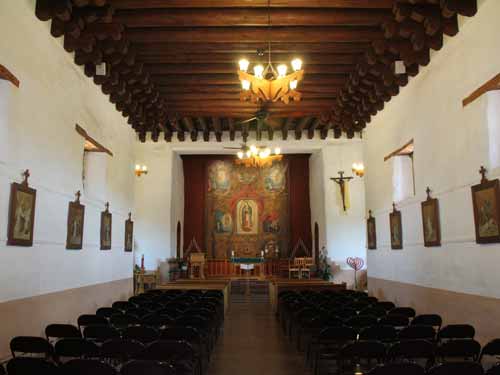



The windows are from the 1920's, after a great fire.

A holy water sink??

This specific image of Guadalupe (Maria) appeared numerous times in the chapel... Why?...

This is a digital copy of 'the miracle'. The original tilma is enshrined in a basilica in Mexico City. A tilma was a type of outer garment worn by the men of central Mexico. It could be worn as an apron or a cloak and was frequently used to carry things. This one was worn by St. Juan Diego Cuauhtlatoatzin, the first Roman Catholic indigenous American saint. Supposedly in 1531, an image of the Virgin Mary miraculously appeared on it. This helped convince the people that they needed to replace their Aztec beliefs with Christianity for it contained many of the same images they also worshiped... the sun, a crescent moon, the jade color of her mantle (the color worn by Aztec royalty), the stars, etc.

Maria appears to Juan Diego, then later her image is found on his cloak.

Inspecting the tilma

Recently it was discovered that there are microscopic images of people (a servant, an elderly man, a child, a slave, a Spaniard, a family) reflected in the pupils of her eyes.

Pretty.

Juan Diego perhaps?


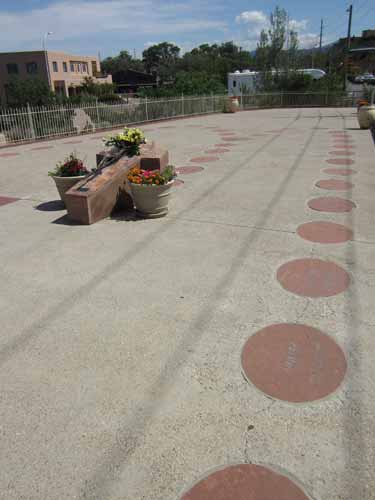
It was hard to tell what these were at first, but then it became obvious that these were meant to be rosary beads, looped around the statue.

Each one represented a different place

We made our way along the main streets of the old downtown. Many of the buildings looked authentic but clearly weren't. This Pueblo Revival style was created to mimic the old adobe homes.

Giant tourist shops lined the street.

The Lensic performing arts center

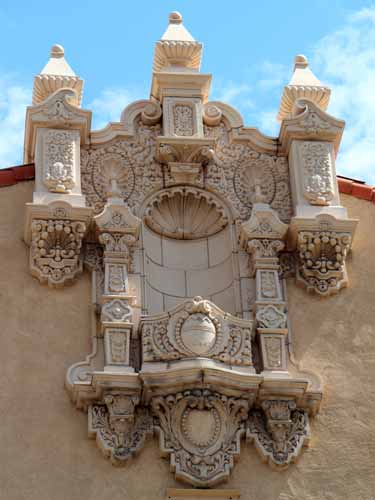

A side alley



One of the new adobe buildings

Tributes to the past
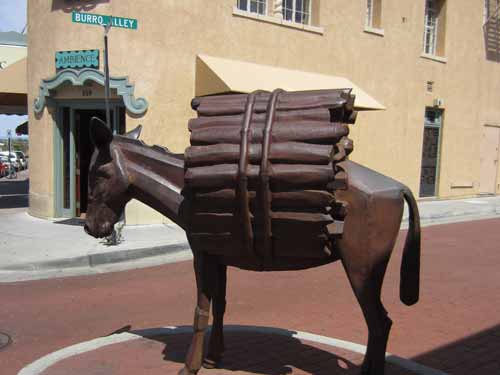
"Homage to the burro," by Charles Southard, marks Burro alley. These animals were vital for wood peddlers, farmers and merchants.

Even the 'cones' into a parking garage were decorated.
At the end of the street was the Cathedral Basilica of St. Francis of Assisi. Commonly known as Saint Francis Cathedral, the Roman Catholic church was built from 1869 - 1886 on the site of an older adobe church. A small chapel on the north side of the cathedral was kept from the old church. It was designed in the Romanesque Revival style with round arches, Corinthian columns and square towers (originally planned to be topped with dramatic steeples but they ran out of money)and built from limestone. It was elevated to the status of basilica on 2005.

